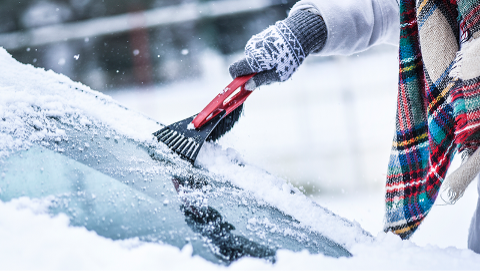
Source | Getty
It's easy to just forget about tire pressure like other systems on our cars, but tire pressure is an easy routine-maintenance detail you shouldn't neglect. Tires that are under-inflated will wear unevenly and prematurely, and tires that are severely under-inflated can be damaged from the excessive heat and increased rolling resistance.
In addition, under-inflation and rolling resistance will compromise your fuel economy. Fuel economy drops 0.2% for every 1 psi drop in tire pressure, and tires will naturally lose about 1 psi per month due to air migration through the slightly porous sidewall of the tire or through the tire's Schrader valve.
That's why it's important to check your tire pressure at least once a month. It's easy, but there's a right way and a wrong way to do it.
Check out this short video from Ben with YouTube Channel Gears and Gasoline:
-
First, purchase a good-quality tire pressure gauge. The pencil style, digital type and dial type are all reliable — don't rely on the tire pressure gauge on the air hose at the gas station, because they may not be accurate.
-
Check tire pressure when the tires are cold or wait three hours after driving. Air can expand with heat, and hot tires can give you an erroneous tire pressure reading.
-
Firmly press the tire pressure gauge's neck onto the valve stem of the tire and take your reading. If you hear air escaping, don't worry — it's not a significant amount of tire pressure unless you let air escape for a prolonged period.
-
Check the tire pressure against manufacturer's recommendations on the sticker on your door frame. Do not just go by the recommendation that's embossed on the tire sidewall.
-
If the tire is overinflated, depress the pin in the middle of the valve stem (known as a Schrader valve) to let some pressure escape.
Remember to check your tire inflation at least once a month. If your car is equipped with a TPMS (tire pressure monitoring system), check your tires' pressure right away if that little light appears on your dash. While you are at it, ensure that your spare tire has the correct pressure.
Some tire shops now use a nitrogen-heavy mixture for inflation, since nitrogen is more stable than oxygen, cannot retain water vapor and is less likely to allow migration of air through the sidewall.
If you detect your tire pulling to one side while driving in a straight line, don't immediately assume an alignment issue. The increased rolling resistance from a low front tire can be enough to cause that pull, just by itself. Check your tire pressure to know for sure.








